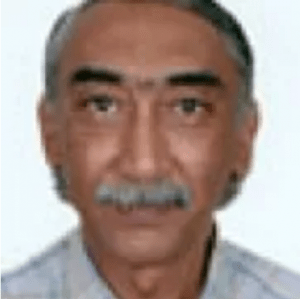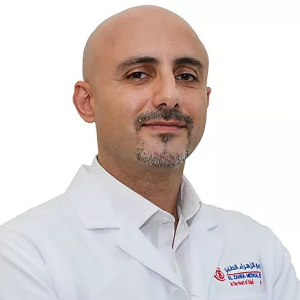Axonotmesis
Nerve crush injuries are categorized in 3 types : Axonotmesis Neuropraxia Neurotmesis What Is Axonotmesis? Axonotmesis is a term used for peripheral nerve injury when there is damage specifically to the axon and the myelin sheath of the nerve fiber. During this, connective tissue sheath-like endoneurium, perineurium, and epineurium remain unbroken. Like all disorders of […] Read More
Top Doctors For Axonotmesis Treatments
Top Hospitals For Axonotmesis Treatments
Axonotmesis
Nerve crush injuries are categorized in 3 types :
- Axonotmesis
- Neuropraxia
- Neurotmesis
What Is Axonotmesis?
Axonotmesis is a term used for peripheral nerve injury when there is damage specifically to the axon and the myelin sheath of the nerve fiber. During this, connective tissue sheath-like endoneurium, perineurium, and epineurium remain unbroken. Like all disorders of the peripheral nervous system, the condition causes impaired movement, sensitivity, and autonomic symptoms. With appropriate treatment, the degeneration can be stopped, thereby improving the prognosis for life. Axonotmesis is more dangerous than neuropraxia as Wallerian degeneration occurs, usually within 1-2 days after the nerve crush injury in this phase. Perineurium and endoneurium usually get harmed while epineurium stays stable. It is more often seen in fractured bones, stretched and compressed injuries. Axonotmesis is generally more visible in males than females in a ratio of 70:30
Surprisingly, young males get triggered by axonotmesis more than elderly persons. Recovery is totally possible but it takes weeks and even months also it depends on the severity of the axonal sprout, on the extent of the lesions. Initially, symptoms of axonotmesis are similar to neurotmesis so people and doctors as well get confused at this point. Fibrillation starts appearing in 10-15 days.
Diagnosis
Diagnosis of axonotmesis consists of the clinical and neurological examination, which helps to determine the damaged area of the nervous system and the degree (nature) of the lesion. The most common technique used is electroneuromyography (ENMG ), which helps to determine the functional state of the peripheral nervous system and muscles. ENMG provides reliable information about the degree of damage and the course of the degenerative-regenerative process.
Additionally, a neurologist collects medical history and personal information to understand the patient’s lifestyle and the type of professional activity.
Axonotmesis Treatment
Once diagnosed, treatment for axonotmesis should begin as early as possible. At the time of active treatment, it is necessary to limit physical activity as much as possible. Neurologists give priority to surgery. Before and after surgery, for rehabilitation, constant conservative therapy is necessary.
Conservative therapy may include:
-
-
- Physiotherapy: To heal injuries, prevent the formation of adhesions and relieve an unpleasant symptom.
- Exercise therapy: To strengthen the musculoskeletal system.
- Massage: To accelerates tissue regeneration processes
-
The treatment program is developed strictly on an individual basis.
Prevention
-
-
- Balanced diet
- Maintaining normal glucose levels
- Providing quality rest
- Exercise with proper technique and precautions
- Mandatory warming up of muscles before any intense exercises
- Strengthening the muscle corset
- Developing a flexible body
- Timely treatment of diseases of the musculoskeletal system
-
Subject to specific recommendations, you can reduce the risk of developing axonotmesis, especially when entering a risk group. Also, prevention measures slow down the course of an existing disease, accelerate the regeneration of damaged tissues, and avoids the need for surgical intervention.
Symptoms
Axonotmesis Symptoms Are :
- Reflexes reduce
- Sensory and motor nerves become immobile and numb
- Acute trauma
- Radicular nerve injury
- Brachial plexus injury
- The initial symptom of axonopathy is impaired sensation, which occurs gradually.
- Creepy & tingling feeling in the foot and hand
- Numbness of the fingers.
- A person may not feel pain and temperature stimuli.
- Autonomic dysfunction
- There is no pronation and supination
- Strength in the calf muscles decreases
- Impaired joint movement
Causes
Other common causes:-
- An allergic reaction of the body
- Frequent injuries to joints and ligaments
- A sudden increase in physical activity
- Work-Related Musculoskeletal Disorders
- Inflammation due to autoimmune disorders
- Deficiency or excess of calcium
- Wearing uncomfortable shoes, high heels
- Old-age complications
It is caused due to the separation of nerve and muscle atrophy.
FAQ
1. What’s Difference Between Neuropraxia And Axonotmesis (Table Is Recommended)
| NEUROPRAXIA | AXONOTMESIS |
|
|
|
|
|
|
|
|
|
|
2. What’s The Difference Between Neurotmesis And Axonotmesis (Table Is Recommended)
| NEUROTMESIS | AXONOTMESIS |
|
|
|
|
|
|
|
|















































































